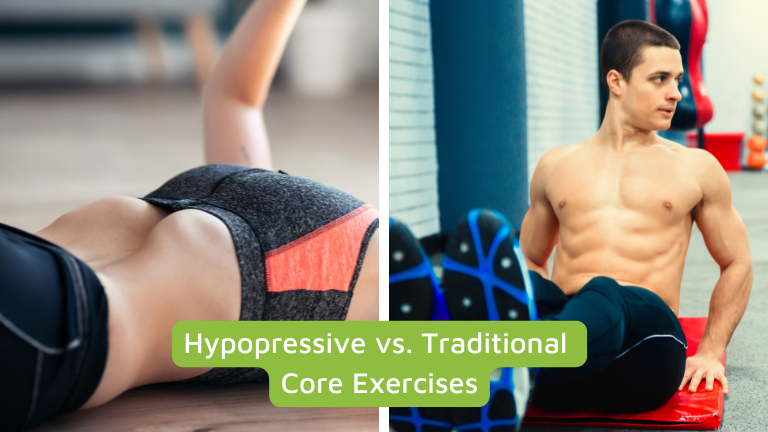
Hypopressive vs. Traditional Core Exercises – What’s the Difference?
When it comes to strengthening the core, most people immediately think of planks, crunches, or leg lifts. While these are common and effective for many, they’re not the only way to build core strength. Enter Hypopressive exercises – a lesser-known but powerful approach to core conditioning that focuses on breathing techniques and posture rather than dynamic movement. But how do Hypopressive exercises compare to traditional core workouts, and which one is right for you?
What Are Traditional Core Exercises?
Traditional core training includes exercises like:
- Crunches
- Sit-ups
- Planks
- Russian twists
- Bicycle crunches
- Leg raises
These exercises aim to strengthen the rectus abdominis, obliques, and transverse abdominis, often through repetitive, high-load movement. They can be excellent for building visible abdominal definition and improving core endurance and strength, especially when part of a balanced fitness routine.
However, traditional core exercises can increase intra-abdominal pressure, which may not be suitable for everyone—particularly postpartum women, individuals with pelvic floor dysfunction, or those recovering from abdominal surgery.
What Are Hypopressive Core Exercises?
Hypopressive techniques originated in postnatal rehabilitation and involve:
- Specific breathing patterns (diaphragmatic breathing and breath holds)
- Postural alignment
- Low-pressure core engagement
Rather than contracting the abdominal muscles through movement, Hypopressives train the deep core and pelvic floor by creating a vacuum effect in the abdomen. This technique can:
- Improve pelvic floor function
- Reduce waist circumference
- Decrease intra-abdominal pressure
- Improve posture and spinal alignment
Key Differences at a Glance
| Feature | Traditional Core Exercises | Hypopressive Exercises |
|---|---|---|
| Involves Movement | Yes | No |
| Focus | Muscle contraction | Breath & pressure control |
| Suitable for Postpartum | With caution | Highly recommended |
| Pressure on Abdomen | High | Low |
| Improves Posture | Indirectly | Directly |
| Targets Visible Abs | Yes | Not the primary goal |
| Deep Core & Pelvic Floor | May engage | Specifically targets |
Which Should You Choose?
The best approach depends on your goals, physical condition, and history:
- If you’re recovering from childbirth, abdominal surgery, or pelvic floor issues, Hypopressive exercises can be a gentler, safer way to rebuild strength.
- If you’re an athlete or gym-goer aiming for visible abs or functional strength, traditional exercises may suit you better.
- For most people, a combination of both methods can lead to optimal results: Hypopressives for deep, foundational strength and pressure regulation, and traditional exercises for endurance, muscle tone, and power.



Sorry, the comment form is closed at this time.